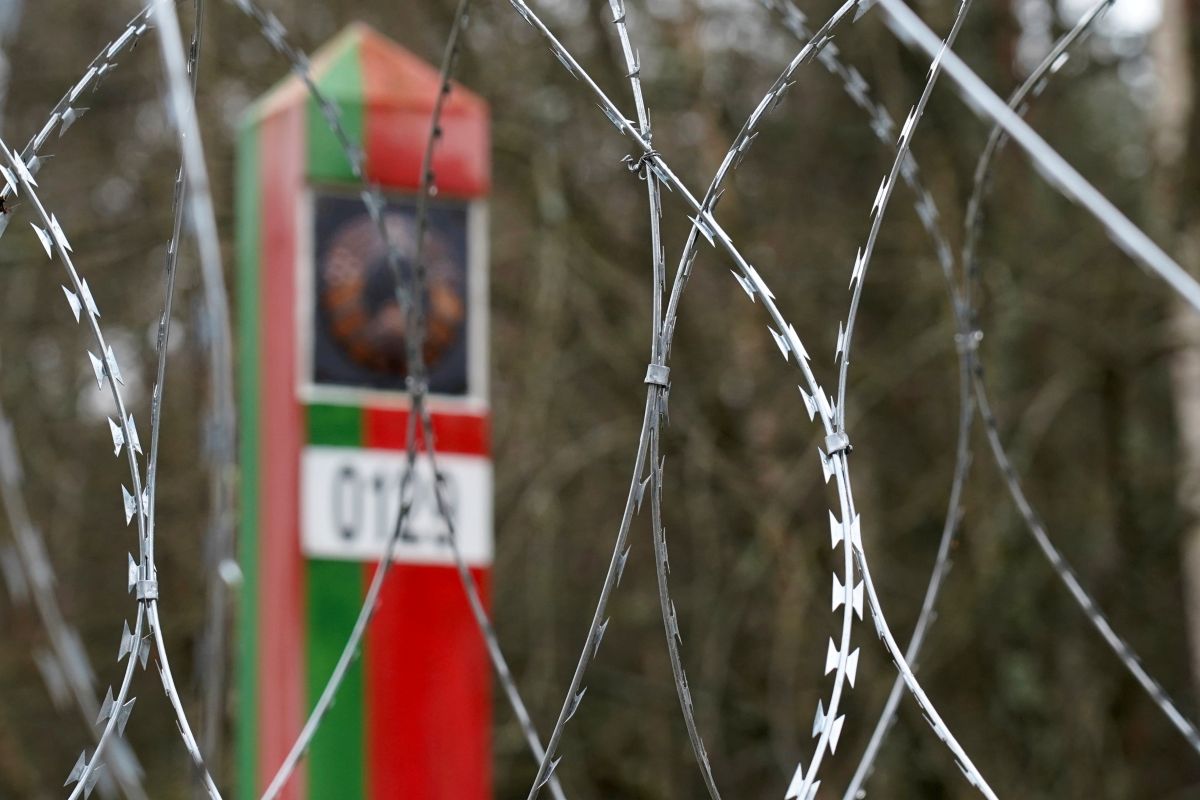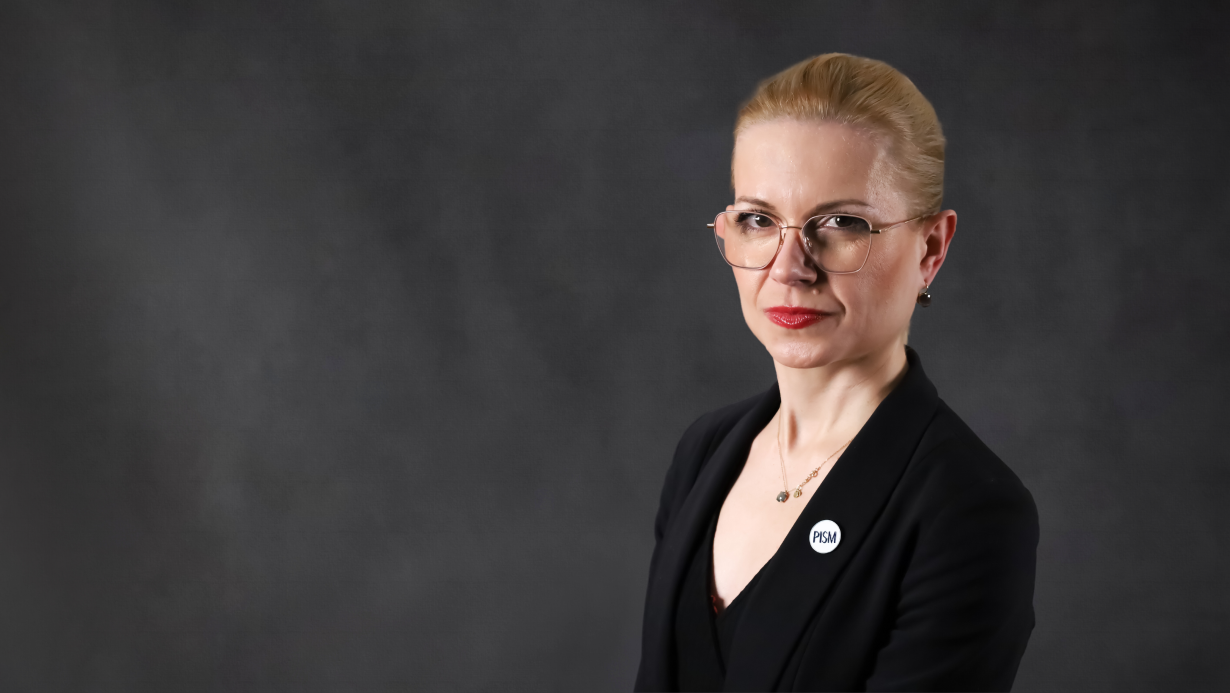The Baltic States' Perspective on the Forced Migration Crisis at the EU border with Belarus
 Photo: JANIS LAIZANS/Reuters/Forum
Photo: JANIS LAIZANS/Reuters/Forum
The actions of the Belarusian regime in delivering non-European migrants to the border with EU countries stems from the Member States’ reactions to the political events in Belarus. In the initial phase of this practice, the main direction of the forced migration was Lithuania, which, after the rigged elections in Belarus in August 2020, was the first to formally not recognise Alexander Lukashenka as the president of Belarus and to introduce individual sanctions against specific Belarusian authorities. At the same time, Lithuania sheltered opposition leader Sviatlana Tsikhanouskaya and other representatives of the Belarusian opposition.
Lithuania’s Reaction
From the Lithuanian perspective, Belarus’s actions constitute a direct threat to state security. That is why in May Lithuania decided to close the border after the number of detected irregular migrants increased significantly. In July and August, the migration peaked, with up to 180 people a day detained. In only the beginning of August 2021, about 4,200 people illegally crossed the Lithuanian-Belarusian border, compared to just over 100 people in 2018, less than 50 in 2019, and about 80 in 2020.
Faced with increasing numbers of irregular migrants, Lithuania has taken multidimensional action, including in legal, political, humanitarian, and logistical areas. In July, the government declared an “emergency situation”, and the parliament adopted a resolution describing Belarusian regime’s actions as a hybrid attack. The Lithuanian border guards were granted support from the army and the police. The services powers within the border area were increased through new regulations authorising patrols to return migrants. Then, from 10 November this year, the Lithuanian authorities introduced a state of emergency in a 5 km strip along the border.
At the same time, although not without controversy about the standard of care provided or the nature of the provisions being introduced (e.g., tightening the procedures for granting refugee status in an emergency), the authorities tried to extend protection to people who had already entered Lithuania (e.g., by providing accommodation). However, the restrictive asylum policy is still in place to discourage potential migrants from taking the risk of coming. By October this year, more than 2,500 people had applied for refugee status, and out of 900 examined by that time, only in one case was the status granted. To further seal the borders, Lithuania has started building a fence and has asked for support from, among others, the Turkish and Iraqi authorities, requesting they suspend flights to Minsk and cooperate in the process of returning migrants.
The Reaction of Latvia and Estonia
The Baltic States are working to limit the forced migration from Belarus. Latvia, noting an increase in the number of illegal border crossing attempts—more than 60 a day—introduced a state of emergency from the beginning of August to 10 November in the Ludza, Krāslava, and Augšdaugava districts and in Daugavpils, which was then extended until February 2022. It also granted the border guards, supported by the military and the police, the right to return people crossing the border to the country from which they had arrived illegally. The emergency declaration also made it impossible to accept applications for granting refugee or some other protected status in the territory covered by the order as well as outside border crossing points. Latvia also started building a fence at the border.
Estonia, while it does not border Belarus, supports the other countries in the region. It has sent police and donated equipment, including drones, to patrol the borders. It plans to strengthen its border infrastructure with Russia. The country’s concern about irregular migration were raised by, among others, the detention in Helsinki at the beginning of October of migrants who had travelled from Belarus to Finland by ferry from Tallinn. Estonia also initiated a meeting of the UN Security Council on 8 October (in the Arria formula, an informal session convened by a member of the Security Council) devoted to Belarus and the situation on its border with the EU.
EU and NATO Support
As the forced migration on the Belarusian border increased, Lithuania turned to the EU for help. Since a visit by representatives of the European Commission in August, Lithuania has so far received financial support from the EU of around €30 million. The meetings were also attended by representatives of the European Border and Coast Guard Agency (FRONTEX), which is also supporting the Lithuanian and Latvian authorities, as well as staff of the European Asylum Support Office (EASO) and the EU Agency for Law Enforcement Cooperation (Europol). In August, the Slovenian presidency of the EU Council condemned the illegal border crossings organised by the Lukashenka regime.
Lithuania is also demanding a change in EU migration law and border-protection regulations. Currently, European institutions only support added surveillance systems, but not the expansion or strengthening of border infrastructure, for example. Lithuania wants physical barriers to be included in the list of tools, and for them to be financed from EU funds. So far, the EU has not agreed to it, which was confirmed at the European Council summit on 19 October.
In the internationalisation of the discussion about the Belarusian practices, Lithuania has turned to the Alliance for help. In the first half of September, during the Russia-led Zapad 2021 military exercises, a team of NATO experts on counteracting hybrid threats (Counter Hybrid Support Team) visited Vilnius. For two weeks, they monitored the exercises and analysed possible scenarios for the follow-on hybrid activities by Belarus, and issued recommendations to Lithuania. During the last meeting of the North Atlantic Council (NAC) on 21-22 October, Secretary General Jens Stoltenberg confirmed the Alliance’s solidarity with the Baltic States and Poland, which see this kind of forced migration as a real threat to security on NATO’s Eastern Flank. If the situation on the border with Belarus worsens, the Baltic States may invoke Art. 4, which calls for consultations in the event of threats to territorial integrity.
Conclusions and Perspectives
Among the Baltic States, Lithuania is struggling the most with Belarus’s actions. The visible dynamics of this kind of forced migration confirms the high level of control of this phenomenon by the authorities in Minsk. Although at present the main direction of the Belarusian activity is Poland, migrants are still being delivered to the border with Lithuania and Latvia.
The Baltic States, together with Poland, have successfully persuaded NATO, the UN and the EU to recognise the Belarusian tactics as elements of a hybrid attack affecting security in the region. The recent NAC meeting confirmed the perception of the events on the border with Belarus as a growing threat to the Alliance. In turn, the debate at the UN Security Council allowed for an even greater internationalisation of this problem. Lithuania, Latvia, and Estonia also gained logistics and financial support from the EU. The Union sees such forced migration as a strong tool to try to influence policy and to divert attention from the internal situation in Belarus.
Poland is cooperating with the Baltic States to limit the forced migration controlled by Belarus. It is doing this at the political level, including in the September consultations of foreign ministers in Riga in the “B3+1” format, and through its uniformed services. The increasingly aggravated situation requires, first of all, strengthening coordination in the field of border surveillance, human resources support, and effectively combating disinformation. Poland, unlike the Baltic States, operates on its borders without the support of EU agencies (e.g., FRONTEX). This lack of direct cooperation with the EU may make it difficult to reach a compromise favourable for Poland in the EU forum where the discussion about the future of migration and asylum policy is underway.


